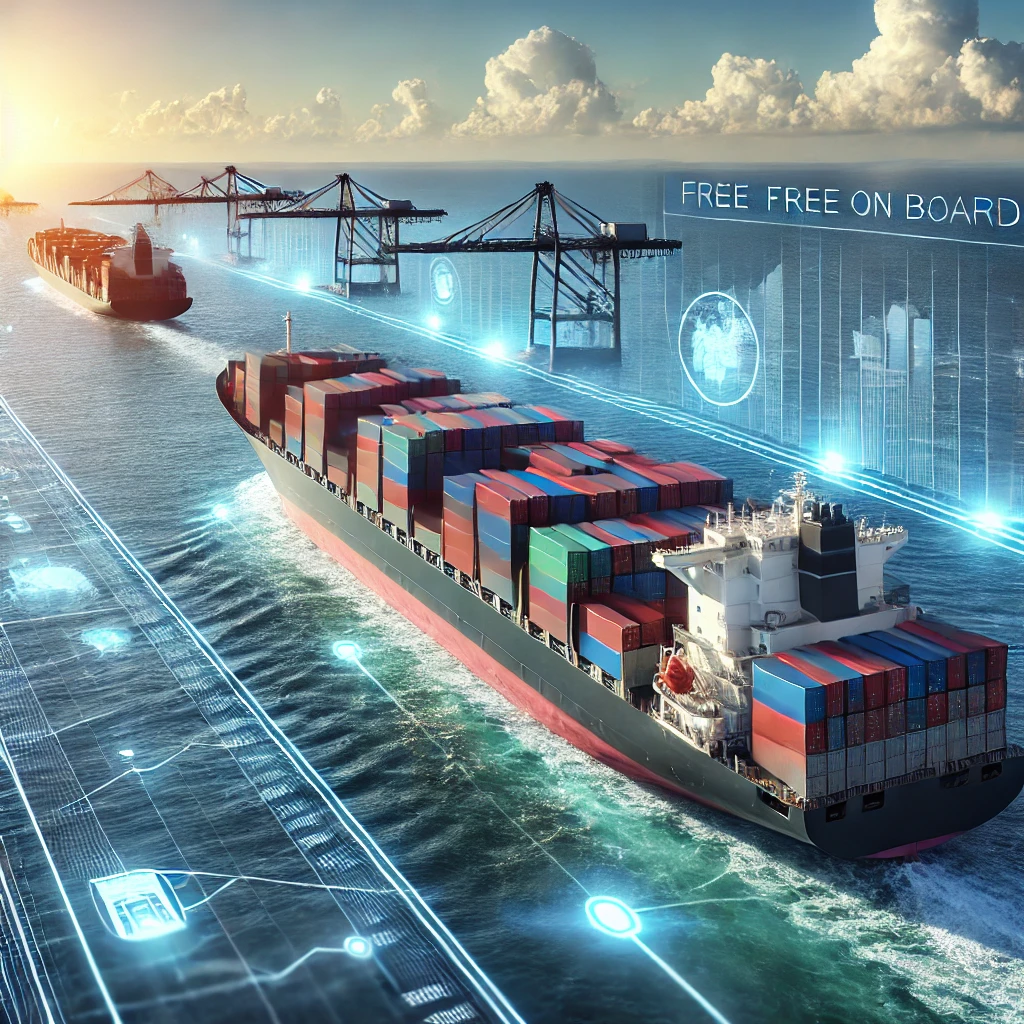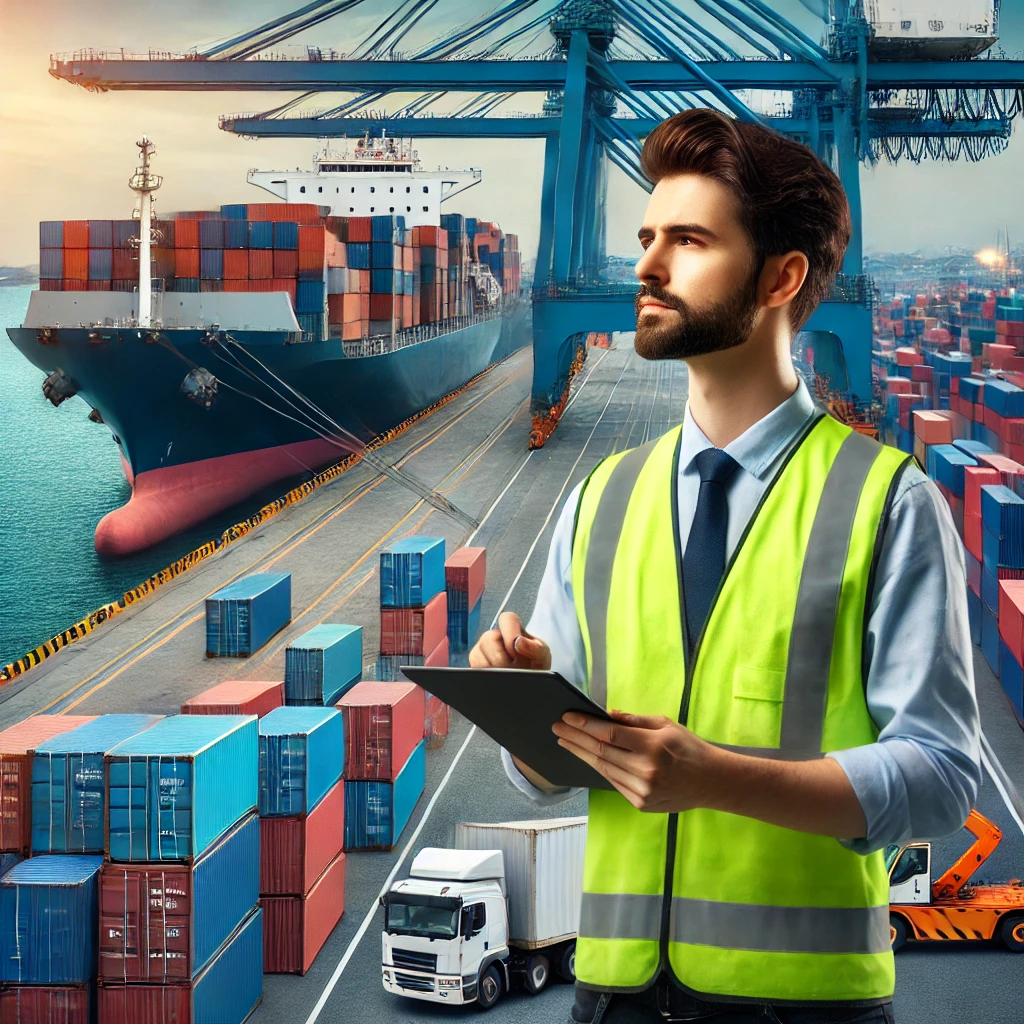Key Insights on Free on Board (FOB)
This guide provides a detailed breakdown of FOB, how it works, its variations, and how it compares to other shipping terms. 🚢📦

🔍 What Is Free on Board (FOB)?
Free on Board (FOB) is a shipping term that specifies when responsibility and ownership of goods transfer from the seller to the buyer during transportation.
Key Features of FOB:
✅ The seller is responsible for delivering goods to the designated port and loading them onto the vessel. 🚢
✅ The buyer assumes ownership and risk once the goods are loaded on the ship. ⚠️
✅ The buyer arranges and pays for ocean freight, insurance, and import duties. 📦
✅ FOB is used exclusively for sea and inland waterway transport, not for air, rail, or road shipping. 🌍
FOB is commonly used because it clarifies cost responsibility between buyers and sellers. 📜
📦 How FOB Works: Step-by-Step Process
A FOB transaction follows these steps:
1️⃣ Order Placement & Agreement – The buyer and seller agree on FOB terms.
2️⃣ Seller Prepares Shipment – The seller handles packaging and transportation to the export port.
3️⃣ Customs Clearance & Loading – The seller clears export duties and loads goods onto the vessel.
4️⃣ Risk Transfers to Buyer – Once the cargo is on board, the buyer assumes liability.
5️⃣ Freight Transport – The buyer arranges and pays for international shipping.
6️⃣ Arrival at Destination Port – The buyer handles import duties and final delivery.
The moment the goods are on board, the seller’s responsibility ends, and the buyer takes control. 🔄📦

⚖️ FOB Variations: FOB Shipping Point vs. FOB Destination
There are two primary types of FOB agreements: FOB Shipping Point and FOB Destination. Understanding the difference is essential for managing liability and logistics.
Feature | FOB Shipping Point | FOB Destination |
Who Pays for Freight? | Buyer 📦 | Seller 🚚 |
When Does Risk Transfer? | When goods are loaded on the ship ⚠️ | Upon delivery to buyer 📍 |
Who Handles Import Duties? | Buyer 🏢 | Buyer 🏢 |
Who Covers Transit Risk? | Buyer 🚢 | Seller until arrival 🏭 |
Best for: | Buyers who want shipping control ✅ | Buyers who prefer seller to handle logistics ✅ |
🔹 Key Takeaway:
- FOB Shipping Point favors buyers, as they control shipping decisions and costs.
- FOB Destination favors sellers, as they manage transportation and pricing.
Understanding these differences helps businesses negotiate better shipping terms. 📊
🔑 Benefits of Using FOB
FOB shipping offers several advantages for both buyers and sellers:
✅ Cost Transparency – Buyers can compare freight rates and choose the best option. 💰
✅ Better Risk Management – Buyers control their own insurance and shipping plans. 🔍
✅ Efficiency in Logistics – Clearly defines who is responsible for what in the shipping process. 📦
✅ Flexibility for Buyers – Buyers can select preferred freight carriers and routes. 🚢
✅ Predictable Costs for Sellers – Sellers only handle local logistics, reducing expenses. 🔄
FOB is a widely used Incoterm because it provides clarity and control over international shipping. 🚛

⚠️ Potential Risks & Challenges of FOB
While FOB is beneficial, there are some challenges that businesses should consider:
❌ Buyers Assume Shipping Risks – If damage occurs after loading, the buyer is responsible. 🚢
❌ Complex Import Regulations – Buyers must handle customs clearance and compliance. 🛃
❌ Potential Hidden Costs – Delays, port congestion, or unexpected fees can add costs. ⚠️
❌ Limited Seller Liability – Once goods are loaded, the seller has no further responsibility. 🏭
Buyers should ensure proper insurance coverage to mitigate these risks. 🔍📑
📜 Common Documents in FOB Transactions
FOB agreements require essential shipping documents to ensure smooth trade and customs clearance:
📄 Bill of Lading (BOL) – Confirms cargo ownership transfer to the buyer. 📜
📑 Commercial Invoice – Lists goods, values, and trade terms. 📦
📦 Packing List – Details cargo contents, weight, and dimensions. 📊
🛃 Customs Declaration – Required for import/export processing. 📑
📜 Freight Insurance Certificate – Recommended for buyers to cover transit risks. 🔒
Proper documentation prevents shipping disputes and delays. 📄✅

🌍 When to Use FOB in International Trade
FOB is ideal for:
✅ Businesses experienced in logistics & international shipping.
✅ Companies that want to control freight costs & carriers.
✅ Bulk shipments where price control is essential.
✅ Buyers who prefer negotiating with shipping providers.
For businesses needing cost efficiency and control, FOB is a great choice. 🚢💰
🚀 The Future of FOB & Global Trade
With advancements in logistics technology and trade regulations, FOB shipping is evolving. Future trends include:
📡 AI & Predictive Logistics – Optimizing freight routes and reducing costs. 🚚
🔗 Blockchain in Supply Chains – Improving security and tracking. 🔒
🌱 Sustainable Freight Solutions – Lowering carbon footprints in shipping. 🌍
📊 Automated Freight Booking – Streamlining carrier selection and shipping contracts. 📦
Businesses that adapt to these changes will stay competitive in global trade. 📡🚢
✅ Conclusion
Free on Board (FOB) is a fundamental Incoterm that defines when responsibility for cargo transfers from seller to buyer. It allows buyers to control freight costs, choose shipping carriers, and manage their own risk.
For businesses involved in international trade, understanding FOB terms ensures cost efficiency, clear logistics responsibilities, and smooth shipping operations. 🚢📦✅
